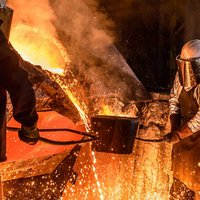Clean Technologies Can Harmonise Steelmaking and Climate Protection
A new report examines eight ways to reduce CO2 emissions from steelmaking – and finds some methods have clear advantages over others

A new report examines eight ways to reduce CO2 emissions from steelmaking – and finds some methods have clear advantages over others

The steel industry is responsible for eight per cent of global CO2 emissions. As more than seven out of ten of today's coal-fired blast furnaces are due to be refurbished or replaced in the 2020s, there is a key window of opportunity to shift to low-emission production methods before the end of this decade.
The new analysis by Agora Industry, Wuppertal Institute and Lund University assesses eight potential breakthrough technologies in terms of their market readiness, cost and impact on emissions. The methods analysed include the use of hydrogen to produce direct reduced iron, scrap-based electric arc furnaces, electrolysis and the implementation of carbon capture in existing coal-fired facilities.
While some of these technologies can already be deployed today to kick-start the market for green steel, others will take more time to reach technological maturity, but show promise in the long-term. A third group may never turn into adequate solutions for decarbonising the steel sector.
"The new report clearly shows that technical solutions to reduce the high levels of CO2 emissions of current steel production to almost zero are within reach", summarised Prof. Dr.-Ing. Manfred Fischedick, President and Scientific Managing Director of the Wuppertal Institute. "These solutions must now be quickly implemented and further developed instead of relying on fossil-based technologies that are not compatible with today’s climate protection targets."
In their new analysis titled "Low-carbon technologies for the global steel transformation", the scientists conclude that scrap and hydrogen-based methods hold the biggest promise for companies aiming to make the switch this decade. By contrast, retrofitting existing coal-based facilities with carbon capture and storage (CCS) technology entails the biggest economic and environmental risk, the authors find.
Regardless of the technologies chosen, appropriate regulatory frameworks, international cooperation, and targeted incentives are necessary to boost demand for green steel and promote its production. At the same time, such measures can help steer manufacturers away from costly technological dependencies.
The 76-page analysis can be downloaded free of charge via the link below.
